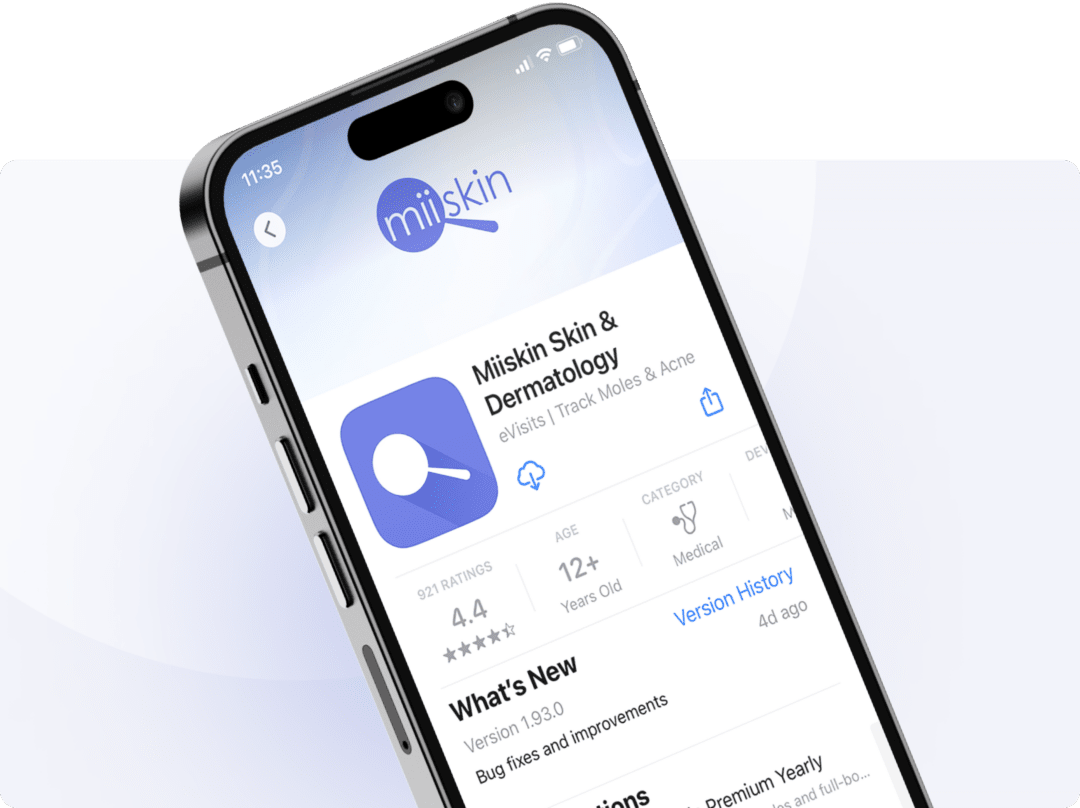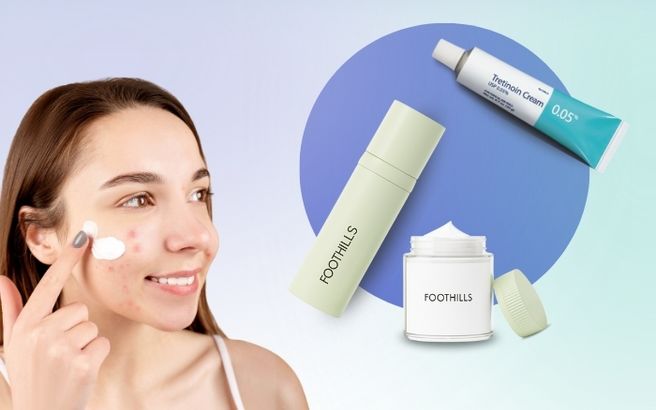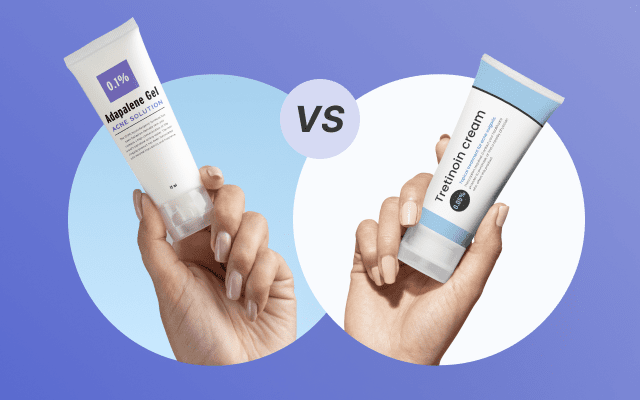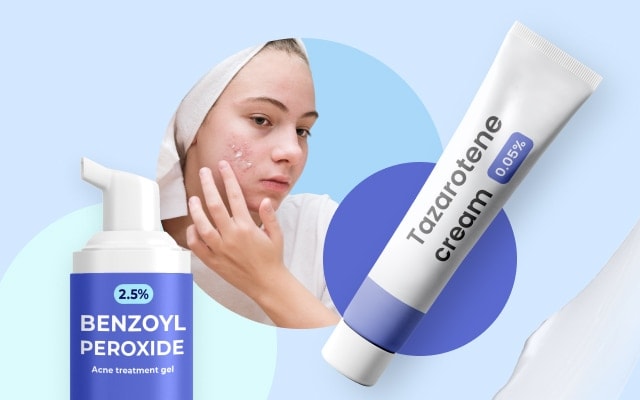Lactic acid vs Glycolic acid: Can you use them together?
Lactic and glycolic acids are Alpha Hydroxy Acids commonly used in skincare due to their exfoliating properties, but which one is right for you and can you combine them? Keep reading to find out.
Table of Content:
What is the difference between lactic vs glycolic acid? | Can you use them together? | Can you find them over the counter? | How to get a prescription? | What is glycolic acid and what does it do? | What is lactic acid and what does it do?
Our commitment to producing high-quality content:
The information presented in this article is based on scientific research and the professional advice of our Content Medical Reviewers, who are experts in the field of Dermatology. How we write our content →
Lactic acid and glycolic acid are Alpha Hydroxy Acids (AHAs)1. They are a group of plant-derived acids used in skincare products, including anti-aging products such as serums, creams, and chemical peels. Although there is extensive research on the benefits of AHAs, glycolic and lactic acids are the most researched and used in skin care while also causing less irritation2 3 .
If you want to learn more about hydroxy acids, you can also read our articles on How to use glycolic and salicylic acid together?, Can you use salicylic and lactic acid together?, Using benzoyl peroxide and salicylic acid together, and Can you combine retinol and glycolic acid?.
Lactic acid vs glycolic acid: what is the difference?
Lactic acid is derived from sour milk and is milder, therefore more appropriate for sensitive skin, while glycolic acid, from sugar cane, is stronger and penetrates deeper, making it more effective for acne.
Lactic acid is recommended for dry or sensitive skin, while glycolic acid suits normal to oily skin.
You and your online dermatologist can work together to choose the best acid for you based on your skin type, concerns, and tolerance.
Which is more hydrating glycolic acid or lactic acid?
Lactic acid is recommended for people with dry, sensitive or mature skin. Through its exfoliating action, lactic acid is used to remove dead skin cells, brighten the complexion, and improve the appearance of fine lines. Unlike other acids, it is also moisturizing.
Consult a Board-Certified Dermatologist Now!

Download the Miiskin app to connect with independent, board-certified dermatologists who are licensed in your state. Answer a few questions, upload some photos and get a treatment plan in 1-2 days. Consultation price is $59 and medication renewals are only $39.
Online dermatology care is ideal for chronic dermatology conditions.
Are glycolic and lactic acid good for acne?
Yes, these two products can be used to combat acne, always keeping in mind the different skin types and adverse effects.
Can you use glycolic and lactic acids together?
You can use glycolic and lactic acid together if they are combined in the same product.
Are glycolic and lactic acid over the counter (OTC)?
You can buy many brands of glycolic and lactic acid over the counter, however you will find out that over the counter products come in a low concentration. If you want to buy a product that includes glycolic and lactic acid together with a high concentration, you will need a prescription.
How to get a prescription for glycolic and lactic acid?
To get a prescription for glycolic and lactic acid, for only $59, you can have a photo-consultation with a dermatologist. You will get an answer in 1-2 working days together with your prescription, if medically adequate for you.
Request a prescription
Can I get a formula that includes glycolic and lactic acid?
Yes, you can get a customized formula that includes glycolic and lactic acid via online compounding pharmacies.
Can I mix vitamin C with lactic and glycolic acids?
Glycolic and lactic acids should not be mixed at the same time as vitamin C, which is also an acid. Combining these ingredients will lose the effect on the skin and may cause irritation.
What is glycolic acid and what does it do?
Glycolic acid is the most used of the alpha hydroxy acid because it improves the appearance of skin damaged by the sun, decreases the appearance of fine lines and wrinkles, reduces hyperpigmentation and smoothens uneven skin texture4 5 .
Benefits of glycolic acid
Glycolic acid offers several advantages, including enhancing the shedding of the skin’s outermost layers, boosting hyaluronic acid levels in the skin, stimulating collagen synthesis, enhancing the integrity of elastic fibers, and exerting an inhibitory influence on melanin production6 7.
What skin type Is glycolic acid best for?
According to Dr. Carolina Fernandez Quiroga, expert dermatologist, glycolic acid is not recommended for people with sensitive or dry skin.
Precautions when using glycolic acid
- Refrain from simultaneously using multiple products containing glycolic acid
- Avoid using glycolic acid if you have recently undergone procedures like microdermabrasion that remove the top layer of your skin
- Discontinue glycolic acid use when spending time at the beach or in direct sun exposure
- Prior to combining glycolic acid with other acne medications or cosmetics, consult with your dermatologist
- Refrain from using glycolic acid concurrently with laser treatments
- Always apply sunscreen when using glycolic acid
- If you are planning to become pregnant, are already pregnant, or are breastfeeding, consult your healthcare provider before using cosmetic products containing glycolic acid
What is lactic acid and what does it do?
Lactic acid is one of the most common AHAs in cosmetic products, such as over-the-counter chemical exfoliants and professional chemical peels.
Lactic acid is a type of AHA derived from milk, but it can also derive from fermented sugar-rich foods; it removes the top layers of dead skin cells and increases the skin’s thickness, promoting firmness8.
Benefits of lactic acid
Lactic acid offers several skin benefits. It enhances both the texture and tone of your skin, promoting a smoother and more even complexion. Additionally, it aids in improving skin firmness, reducing the appearance of dark spots and pigmentation issues, as well as smoothing out fine lines and wrinkles. Lactic acid contributes to a brighter and smoother overall complexion while also minimizing the visibility of pores, resulting in healthier-looking and more youthful skin9.
What skin type is lactic acid best for?
People with all skin types can use lactic acid; however, it is particularly recommended for sensitive, dry and mature skin.
Need Expert Dermatologist Care?

Get expert advice from a licensed online dermatologist by simply uploading photos from your phone. If needed, a prescription (branded or generic depending on preference) will be sent directly to your favorite pharmacy. Nationwide coverage.
Precautions when using lactic acid
The precautions in the use of lactic acid are similar to glycolic acid, as in any product that performs peeling, avoid using similar products at the same time, avoid high concentrations, consult your dermatologist if you want to combine it with prescription products, or others exfoliants and always use sunscreen with a high SPF factor like 50.
Conclusion
In conclusion, while glycolic and lactic acids offer skin benefits, it is important to exercise caution when using them, particularly when combining them or opting for high concentrations.
Seeking guidance from a licensed healthcare professional is advisable to avoid potential skin irritation. For tailored skincare recommendations, consider consulting with an online dermatologist who can suggest the most suitable products for your specific skin type.
Consult a Board-Certified Dermatologist Now!

Download the Miiskin app to connect with independent, board-certified dermatologists who are licensed in your state. Answer a few questions, upload some photos and get a treatment plan in 1-2 days. Consultation price is $59 and medication renewals are only $39.
Online dermatology care is ideal for chronic dermatology conditions.
Article References:
https://www.ncbi.nlm.nih.gov/pmc/articles/PMC6017965/
https://www.fda.gov/cosmetics/cosmetic-ingredients/alpha-hydroxy-acids
https://pubmed.ncbi.nlm.nih.gov/19245467/
https://onlinelibrary.wiley.com/doi/10.1111/j.1524-4725.1996.tb00347.x
https://onlinelibrary.wiley.com/doi/10.1111/j.1524-4725.1998.tb04209.x
https://link.springer.com/article/10.1007/s004030050212
https://onlinelibrary.wiley.com/doi/10.1046/j.1524-4725.2001.00234.x
https://www.webmd.com/vitamins/ai/ingredientmono-1686/lactic-acid
https://pubmed.ncbi.nlm.nih.gov/8784274/





 Do you want a prescription for azelaic acid?
Do you want a prescription for azelaic acid?